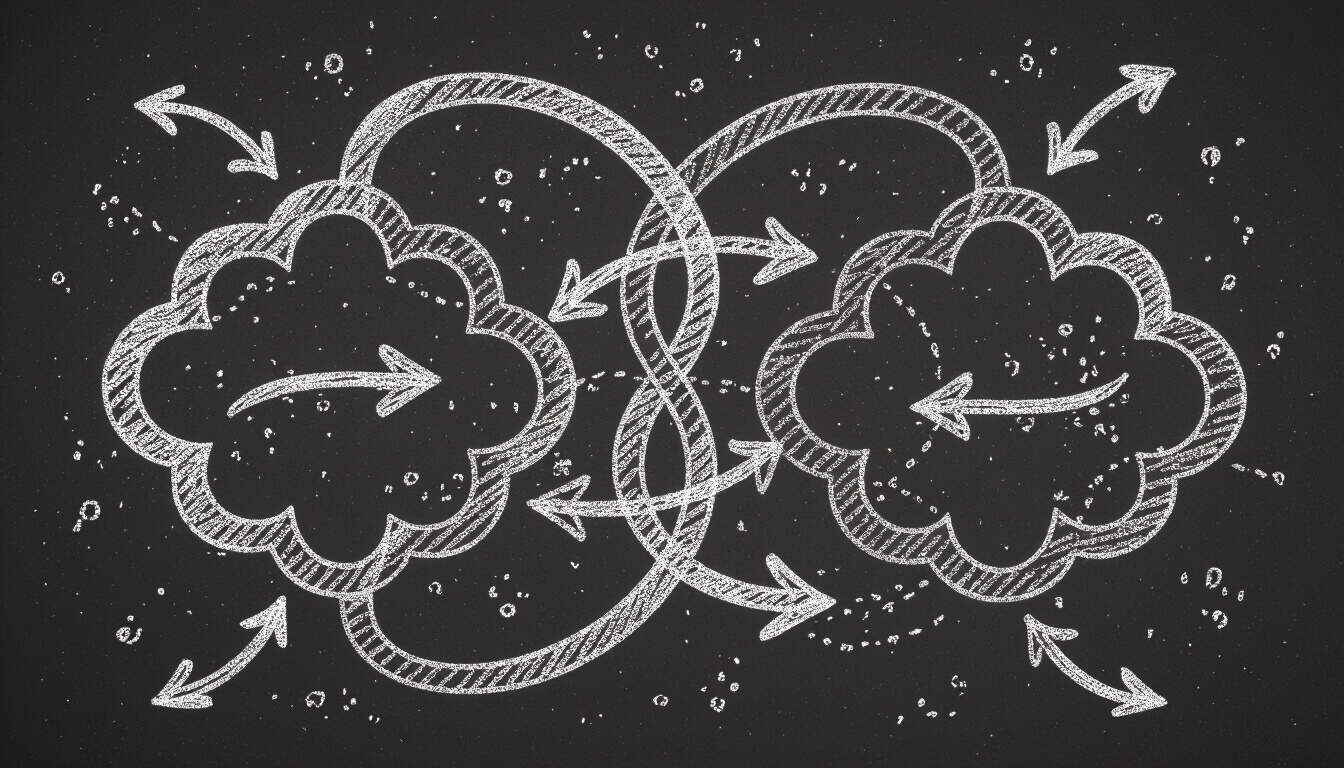Exploring Feedback Mechanisms Through Second-Order Thinking
 by Verner Mayer
by Verner Mayer
Feedback mechanisms play a key role in systems thinking, influencing outcomes in various fields. By examining examples, we see how these loops connect to second-order thinking, offering insights for cognitive growth and decision-making in professional and personal contexts. This article delves into practical illustrations and their implications.

Feedback mechanisms are integral to how systems operate and evolve. These loops help us see beyond immediate effects, linking directly to second-order thinking. In essence, such mechanisms involve processes where an output influences future inputs, creating cycles that can either amplify or stabilize outcomes.
To begin, consider a basic example in ecology. A population of predators and prey forms a classic feedback loop. If the prey population increases, it provides more food for predators, leading to a rise in predator numbers. Eventually, this reduces the prey population, which then decreases the predator population. This illustrates a negative feedback loop, where the system self-regulates to maintain balance. Such patterns encourage feedback loops that promote stability in natural environments.
In business settings, feedback mechanisms appear in performance reviews. An employee receives input on their work, which they use to adjust their approach. For instance, if sales figures drop, management might implement new strategies, like training programs. This could lead to improved performance, creating a positive feedback loop where success builds on itself. However, if not managed well, it might spiral into overconfidence, highlighting the need for careful observation in organizational dynamics.
Turning to personal development, feedback loops are evident in habit formation. Someone trying to build a exercise routine might track their progress daily. As they notice improvements in health, this reinforces the habit, forming a positive loop. Conversely, ignoring setbacks could create a negative loop, where discouragement leads to abandonment. Here, second-order thinking comes into play by anticipating these long-term effects, such as how sustained habits contribute to overall well-being.
The Role of Feedback in Cognitive Processes
Cognitive processes benefit greatly from feedback mechanisms. When individuals engage in reflective practices, they create loops that enhance learning. For example, a student preparing for exams might review mistakes from practice tests. This feedback allows them to adjust study methods, leading to better results over time. Such loops demonstrate how repeated cycles refine skills, fostering deeper analytical abilities.
In professional environments, team collaborations often rely on feedback for innovation. A project team might share ideas in meetings, using input to refine proposals. This process forms a feedback loop that drives continuous improvement, helping groups adapt to challenges. By applying feedback loops, professionals can avoid pitfalls and achieve more effective outcomes.
Practical Examples in Everyday Life
Daily routines offer simple yet profound examples of these mechanisms. In cooking, for instance, tasting a dish and adjusting seasonings creates an immediate feedback loop. This ensures the final product meets expectations, teaching us about iterative refinement.
Another example is in financial planning. Saving money might involve monitoring expenses and adjusting budgets based on monthly reviews. If savings goals are met, it encourages further discipline, forming a positive loop. On the other hand, overspending could trigger a negative loop, prompting corrective actions. These instances show how second-order thinking helps predict the broader impacts of small decisions.
In technology, algorithms use feedback to improve accuracy. A recommendation system on a streaming service learns from user preferences, refining suggestions over time. This loop enhances user experience, illustrating how automated processes mirror human cognitive patterns.
Implications for Systems Thinking and Growth
Systems thinking involves viewing interconnected elements, where feedback mechanisms are key. By recognizing these loops, individuals can make more informed choices. For students, this means understanding how study habits affect long-term academic success. For professionals, it translates to better strategic planning and problem-solving.
Personal development thrives on such insights. Journaling, for example, creates a feedback loop by allowing reflection on past actions. This practice helps identify patterns and make adjustments, leading to personal growth. Overall, integrating feedback into daily life builds resilience and adaptability.
In conclusion, feedback mechanisms offer valuable lessons through their examples in various domains. By linking them to feedback loops and encouraging second-order thinking, we equip ourselves for better decision-making and sustained development. Exploring these concepts reveals their potential to transform how we approach challenges, making them essential tools for growth.
